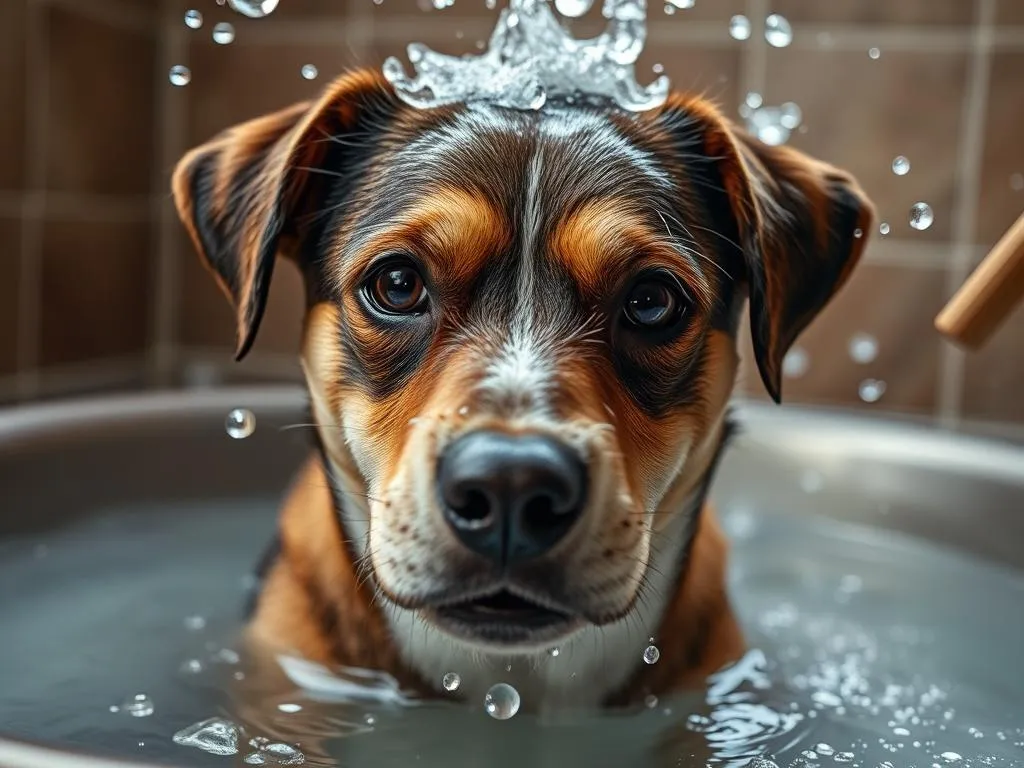
Introduction
Bathing your dog is an essential aspect of their grooming needs. Regular bathing not only keeps your dog looking clean and fresh but also plays a significant role in their overall health. Contrary to popular belief, the frequency of baths can vary based on factors such as breed, activity level, and skin condition. Understanding your dog’s specific needs is crucial to maintaining their hygiene.
However, some dogs present a unique challenge when it comes to bathing—particularly those that hate water. This aversion can stem from various reasons, and it’s important to address this issue to ensure your furry friend remains healthy and clean.
The Importance of Bathing Your Dog
Health Benefits
Bathing is vital for maintaining your dog’s skin and coat health. Regular baths remove dirt, debris, and excess oils, which can contribute to skin infections and irritations. Moreover, bathing helps to prevent parasites such as fleas and ticks from taking residence in your dog’s fur.
Behavioral Benefits
Bathing your dog can also have behavioral benefits. For dogs that hate water, a positive introduction to bathing can help build their confidence and reduce anxiety related to grooming. A calm and relaxed dog is easier to manage during bath time, making the process more enjoyable for both of you.
Understanding Your Dog’s Fear of Water
Common Causes
Several factors may contribute to your dog’s dislike of water. Previous negative experiences, such as a rough bath or being caught in the rain, can lead to lasting fear. Furthermore, certain breeds are more prone to water aversion due to their natural instincts and characteristics.
Signs of Discomfort
Understanding your dog’s discomfort is essential. Look for body language indicators like cowering, tail tucking, or trying to escape. Vocalizations, such as whining or barking, can also signal that your dog is unhappy with the bathing process.
Preparing for the Bath
Gather Supplies
Before diving into bath time, it’s essential to gather all necessary supplies. Here’s a list of what you’ll need:
- Dog shampoo (preferably gentle and formulated for pets)
- Dog conditioner (optional, but beneficial for long-haired breeds)
- Non-slip mat (to prevent slipping)
- Towels (for drying off)
- Brush (to remove tangles before bathing)
- Water sprayer or bucket (for wetting and rinsing)
Create a Comfortable Environment
Choosing the right location can make a significant difference. Decide whether to bathe your dog indoors or outdoors, depending on their comfort level and your available space. Ensure the bathing area has a non-slip surface to prevent accidents, making your dog feel more secure.
Techniques for Bathing a Dog That Hates Water
Gradual Introduction to Water
When dealing with a dog that hates water, it’s essential to gradually introduce them to the bathing process. Start by allowing your dog to explore the bathing area without any water. Use treats and praise to create a positive association. Once they seem comfortable, you can slowly introduce a little water, perhaps by wetting a sponge and gently rubbing it on their fur.
Alternative Bathing Methods
If your dog is particularly resistant to traditional bathing, consider alternative methods. A sponge bath or using dog-friendly wet wipes can provide a quick clean without the stress of water. Additionally, a dog-friendly spray nozzle or handheld showerhead can help control the water flow and avoid overwhelming your pet.
Making Bath Time Enjoyable
Incorporating toys and distractions during bath time can help keep your dog engaged and relaxed. Consider using waterproof toys or treats that they love. Keeping the bathing session short and positive is crucial to changing their perception of water.
Step-by-Step Guide to Bathing
Pre-Bath Preparations
Before you start bathing your dog, brush them thoroughly to remove any tangles or loose fur. This step not only makes the bathing process easier but also allows you to inspect their skin for any irritations or issues. Ensure your dog is calm and comfortable before proceeding.
Bathing Process
-
Wetting your dog: Start by wetting your dog’s body gradually. Use a gentle spray or a cup to pour water over their back, avoiding their head initially.
-
Applying shampoo: Once your dog is wet, apply a small amount of dog shampoo. Massage it into their coat, focusing on areas that are particularly dirty.
-
Rinsing thoroughly: Rinse your dog thoroughly to ensure all shampoo is removed. Leftover shampoo can irritate their skin, so take your time with this step.
-
Drying methods: After rinsing, use towels to gently dry your dog. If your dog tolerates it, a blow dryer on a low setting can help speed up the drying process. Always keep the dryer at a safe distance to avoid overheating.
Post-Bath Care
After the bath, reward your dog with treats or praise to create a positive association with bath time. Regular grooming can help maintain your dog’s coat health post-bath, reducing the need for frequent washing.
Troubleshooting Common Issues
Dog Refusing to Enter the Bath
If your dog refuses to enter the bathing area, try leading them in with treats or toys. You can also try bathing them in smaller spaces, like a shower stall, where they feel more secure. Patience is key; avoid forcing them into the bath, as this can reinforce negative feelings.
Excessive Barking or Whining
If your dog becomes excessively vocal during the bath, consider using calming techniques. Soft, soothing words can help reassure them, and you might also play calming music to create a more relaxing atmosphere.
Safety Precautions
Always ensure the water temperature is comfortable—neither too hot nor too cold. Be cautious about getting shampoo in your dog’s eyes and ears; using a washcloth to cover these areas can help prevent discomfort.
Alternatives to Traditional Baths
Professional Grooming Services
In some cases, it may be beneficial to seek professional grooming services. Groomers are trained to handle dogs with water aversion and can provide a stress-free experience for your pet. If your dog’s fear is severe, this can be a great option.
Using Waterless Dog Shampoos
Waterless dog shampoos are an excellent alternative for maintaining hygiene without a full bath. These products can help remove dirt and odors while leaving your dog clean and fresh.
Regular Brushing and Wiping
Regular brushing and using pet-safe wipes can keep your dog clean without the need for frequent baths. This process can be especially useful for dogs that are sensitive to water.
Conclusion
Maintaining your dog’s hygiene through regular bathing is crucial for their health and well-being. Understanding how to bathe a dog that hates water requires patience and creativity. By gradually introducing them to the bathing process, using alternative methods, and creating a positive experience, you can transform bath time into a less stressful event for both you and your furry friend.
Remember that consistency is vital. Over time, your dog can learn to enjoy bath time, leading to better hygiene and a happier pup. With the right approach, you can ensure that your dog remains both clean and comfortable.









